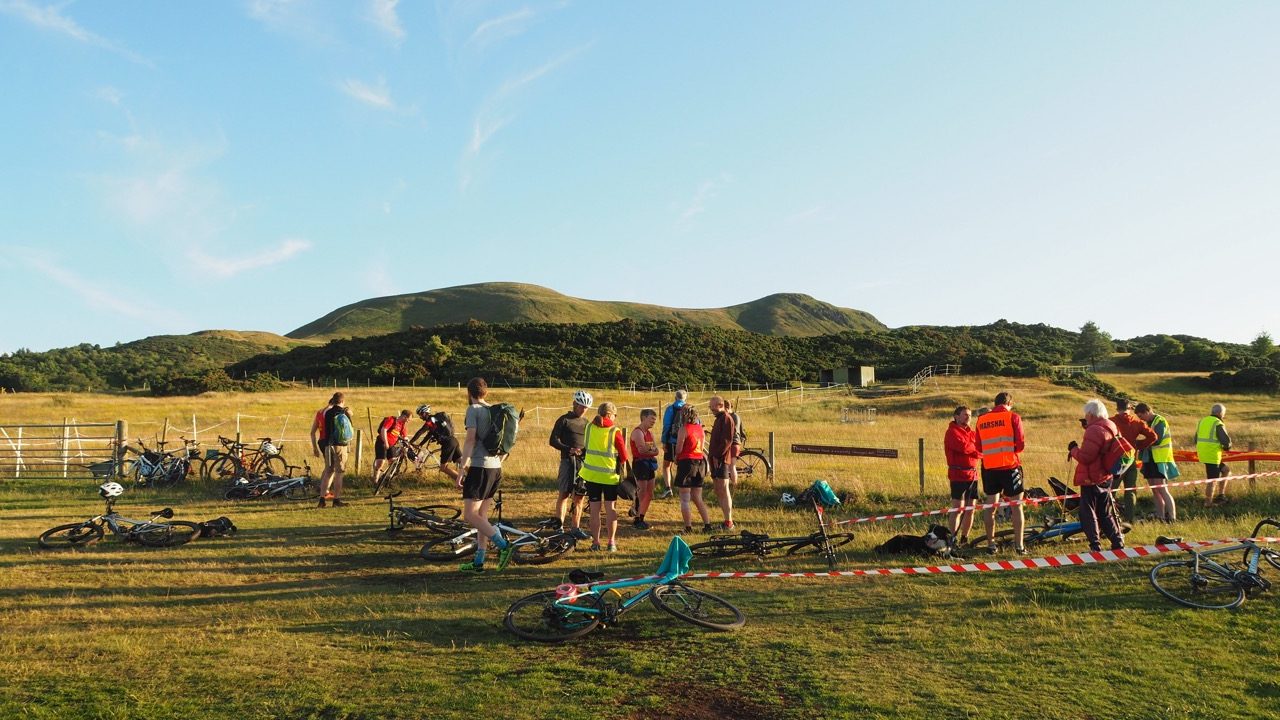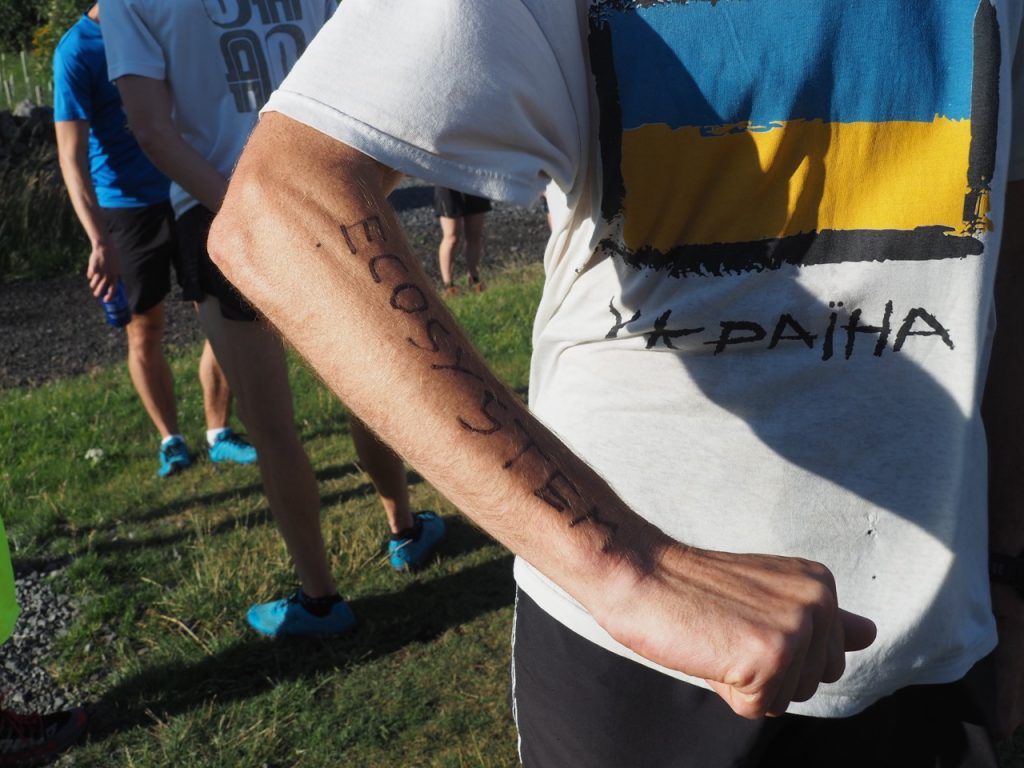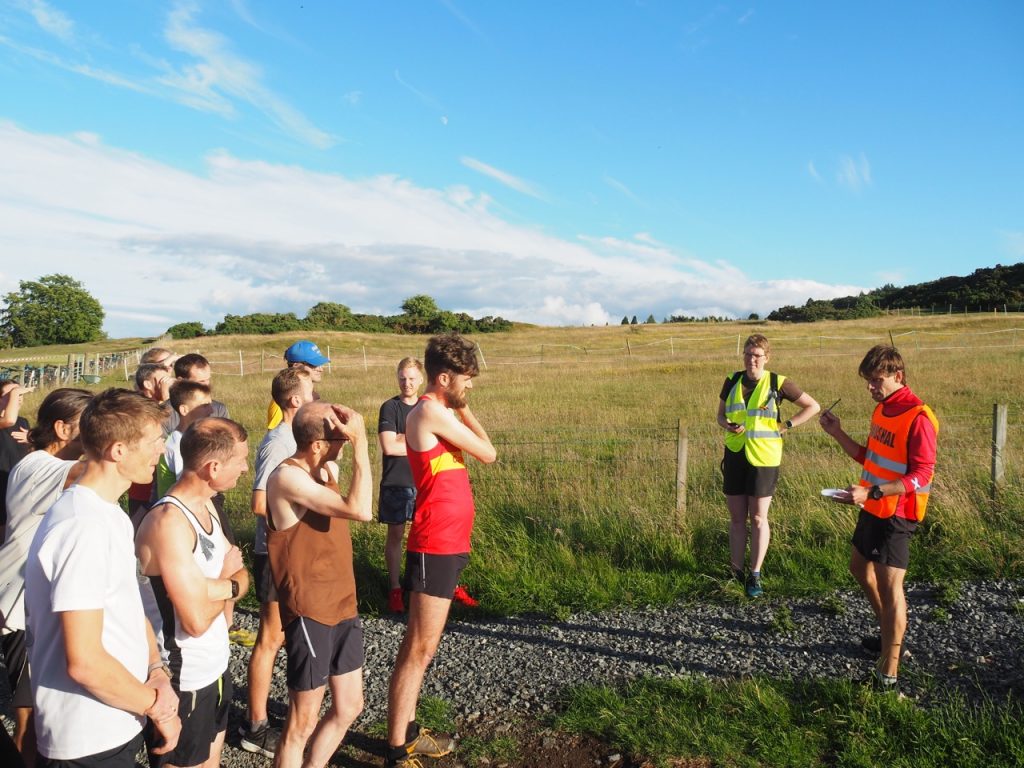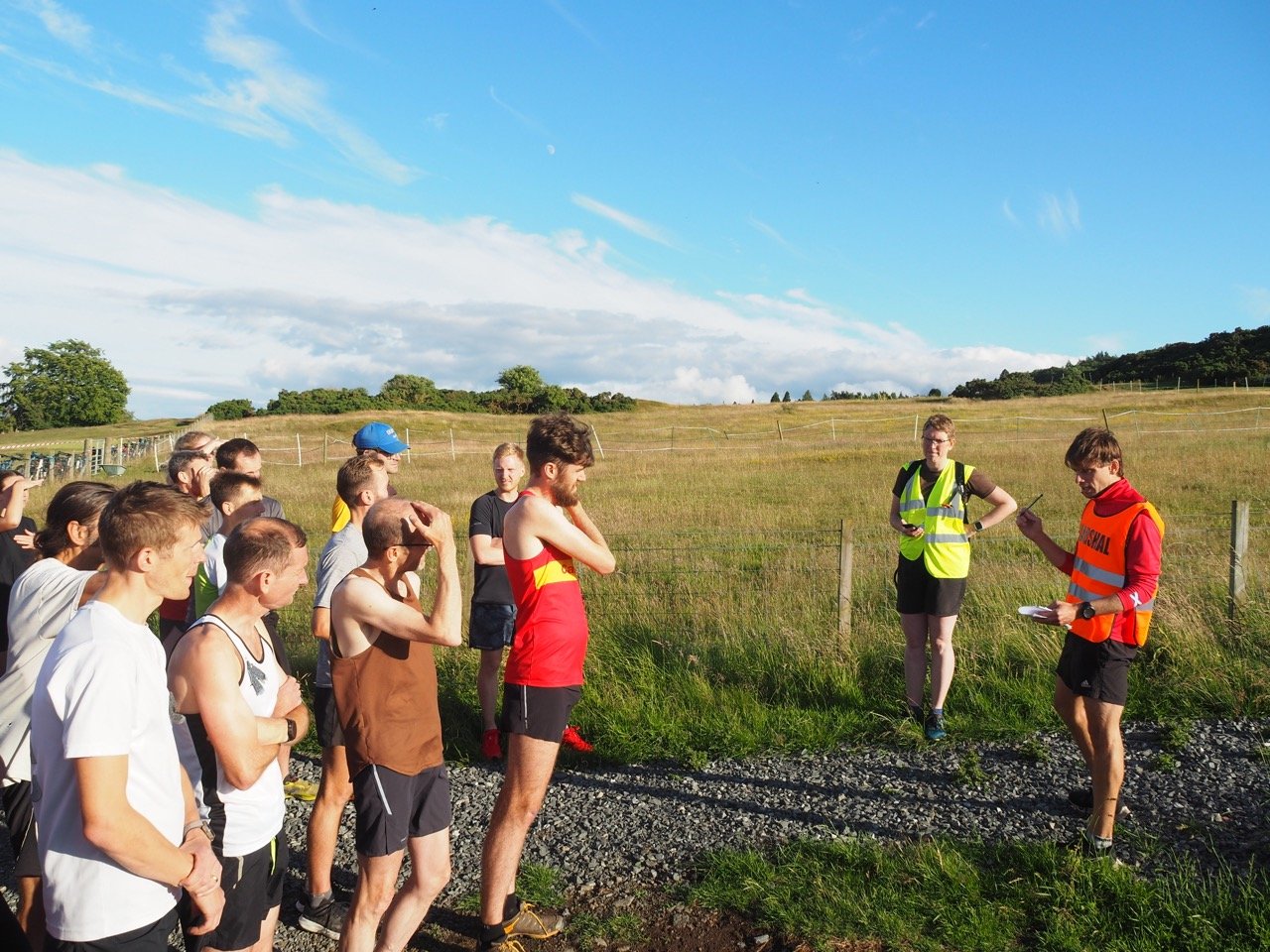by Johnny Muir
‘The revolution won’t have an online entry fee, plastic medal or pointless goodie bag.’
I come back to Ian Campbell’s words time and time again. (Campbell once ran up Allermuir, a 493-metre hill in the Pentlands outside Edinburgh, 29 times over three days, clocking a cumulative ascent that would have seen him summit Everest from sea level.) His words should not be seen as an assault on running races, but a truth about our existence.
There is just so much stuff.
When I first committed to organising a hill race – up Allermuir, naturally – I bandied around numerous phrases to describe the ethos: sustainable, carbon zero, waste-free, vehicle-free, net zero.
It was only after it was all over that I realised what my aim had been all along:
Stuff-free.
But in a world addicted to stuff, how do you create a stuff-free race?
Firstly – the most impactful and controversial – you get rid of cars.

When racing meets climate action
When I was first considering the idea of a sustainable race,I was reading Damian Hall’s We Can’t Run Away From This. I knew trainers, T-shirts and what we eat was bad, but I was struck by the colossal carbon footprint of simply travelling to a race. According to studies, more than 90 percent of the entire race-associated contribution to CO2e emissions comes from travel.
Frankly, I felt embarrassed: I can never undo all the miles I have travelled by car for the purpose of travelling miles on foot. But there is no sense in dwelling on what has been; instead, look forward and be better. And so, Allermuir Hill Race was conceived.
Banning vehicles did not go down well. Anyone involved in the race, in any capacity, should walk, run or cycle, or get a bus to the start, I decreed. When the race details were published on the Scottish Hill Runners Facebook site, I was told: ‘Another city-based, one-size-fits-all policy. I assume you don’t want runners from rural locations where public transport is infrequent or non-existent.’
He was right, of course. This was deliberately an Edinburgh-centric race – by doing so I was making Allermuir Hill Race accessible to half a million people. A few days later, I received an email, with words to the effect: ‘I live 11 miles away in a rural location, with limited public transport. Can I drive?’ I responded firmly but politely. The ethos is car-free, but I cannot and will not police an ethos. He never came. It was at this point the race, however small, became more than a race. This was climate action.
Finding joy in less
Next, get rid of paper. I strongly discouraged race maps – and I did not see any on race night. Race numbers were trickier, but a solution was ultimately terribly simple. Numbers were replaced with sustainability-themed words and racers were asked to write these on their forearm. It is gimmicky – and I do not like it when gimmicks and running mix – but it was a free gimmick. Apart from a bus fare, runners paid nothing to race.
Then, the potentially ‘joyless’ part: no medals, no goodie bag, no T-shirt, no refreshments, no soup, no prizes. Another Facebook post took me to task: ‘This sounds like an utterly joyless and depressing experience, removing almost everything that makes an event.’ I suppose it depends on your definition of ‘joy’ – and also ‘event’. I will take feelings and sensations over a flimsy ‘medal’ every time.

Responsible hill-goers
Finally, obsess about leaving no trace. This starts with the liaison between race organiser and landowner. I would like to do this, on this day, with this number of people, in this way. Is that okay? An environmental impact assessment acknowledged the ground-nesting birds and Highland cattle that could be encountered. The race was diverted off a ridge line to avoid further erosion to an established footpath. The notion of litter was inconceivable. You would not have known we were there. As hill-goers, we treasure our rights – but we know our responsibilities.
One of those responsibilities is the safety of others. Simple and stuff-free does not mean unsafe: marshals, carrying first aid and some of them mountain leaders, were dotted about the course; two sweepers followed at the rear; using words instead of numbers would make no difference to the speed of action were a runner to be unaccounted for. While race maps were discouraged, maps were not – just not new ones, or printed pages that would go straight in a bin. A race organiser of a hill or fell race also has faith and trust in his or her runners. It is unwritten law: you will help your fellow runner if the need presents itself.
Race night
Race evening, and they came: 53 in the end; I had told the landowner it would be 50. The other 499,947 Edinburgh residents were engaged elsewhere. Off they went into the hills, and some 10 minutes later we watched stick figures ascend Caerketton, the first hill. The hills were glorious that night: the light seemed to illuminate every crease, and they glowed with the sheen of a hosing from a cloudburst that had moved on just in time. The winners dashed back, breathlessly finishing in a funnel of bicycles. With the race run, there was no expectation of anything further: just conversation, a community sharing experiences, a cycle home in the gloaming. ‘Joyless?’ It was joyful and uplifting – the very antidote to depressing.
We just needed to get rid of the stuff.

Small is beautiful
Was it perfect? Of course not. Hypocrisy would be the wrong word; we tried our best. One runner, deeply apologetic, admitted he drove part-way. His tone was that of a confessional. We used some paper, much of it scrap in my own planning, but some ‘new’ to note down finishing positions and words. The field was male-heavy. Women made up only a fifth of all finishers. And I sent a lot of emails, probably around 100. Those 4g CO2e messages add up. It all adds up.
Campbell may still be disappointed. This was no ‘revolution’. Good is quickly dismantled by less good. Some of the runners that night would travel from Edinburgh to Fort William and back, a round trip of nearly 300 miles, for a race just four days later. You can only try, only do your best.
‘Small is beautiful,’ someone would remark later. I nodded quietly. Better for us, better for the planet.
The second instalment of the Allermuir Hill Race takes place on Wednesday 26 June.


